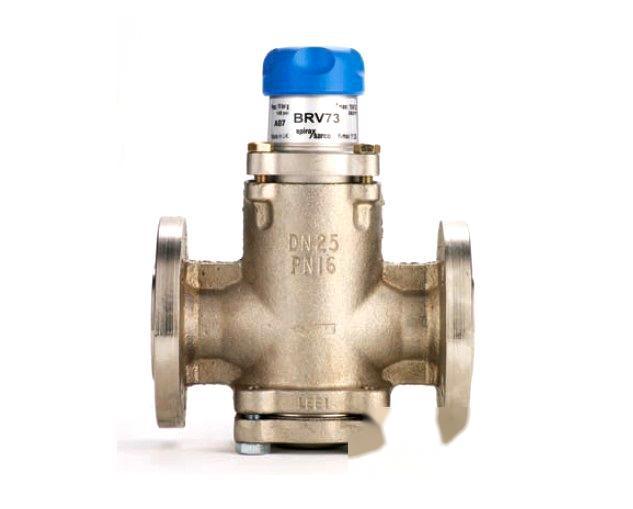Introduction to Spirex BRV73 Direct-Acting Pressure Regulator
The BRV71 and BRV73 are direct-acting pressure regulators made of ductile iron, with the former featuring threaded connections and the latter featuring flange connections. They are mainly used in steam systems. The structure is compact, the design is simple, and the surface is treated with high-quality electroless nickel plating. Compared to the BRVZ series pressure regulators, the BRV71 and BRV73 have a pressure-balanced bellows that can balance the pressure difference on the main valve head. The main valve uses flat sealing and has a self-cleaning function.
Working Principle of Spirex BRV73 Direct-Acting Pressure Regulator
1. At the beginning, the return spring closes the valve, and the steam pressure applies equal pressure on the valve core surface and the bellows surface (both areas are equal).
2. If the pressure adjustment handle is turned clockwise at this time, the control spring will be compressed and will push the valve rod to move the valve core away from the valve seat, allowing steam to flow into the downstream side.
3. The downstream pressure will enter the sensing chamber through the sensing holes below the valve core, forcing the control bellows to extend upwards. At the same time, it also applies pressure to the pressure-balanced bellows below, eliminating the influence of downstream pressure on the back of the valve core.
4. When the downstream pressure applied to the control bellows exceeds the control force of the spring, it pushes the main valve rod and valve core upwards to close the valve. Under normal circumstances, the valve will maintain at a certain height, making slight adjustments according to different pressure changes and load conditions.
Spirex Direct-Acting Pressure Regulator BRV73 Valve Mechanism B4 Series 15 lb. Inverted Bucket Steam Trap.
The Spirex BRV73 direct-acting pressure regulator features a minimal bucket device that allows condensate and air to be discharged from the trap. The mechanism operates through a lever and seat, which is held in place at the appropriate location by a threaded connection to the outlet port of the trap. Connected to this mechanism is an inverted bucket that maintains steam pressure inside the bucket, which in turn keeps the seat closed when steam is present. When the steam cools and transitions into a liquid state (condensation), the trap fills with condensate, causing the bucket to tip, which opens the seat to allow the discharge of condensate and air.













